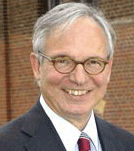
145 years of tradition, a rich experience of over a century in textile arena! In what ways has this accumulated experience helped Terrot to stand unique in today's marketplace?
Not without reason the logo of Terrot is: “Experience makes the Difference”. The survival of Terrot over 145 years is best explained by three key factors: Innovation, Quality and Experience. All three are important when you want to be a successful manufacturer of circular knitting machines. There are indeed very few circular knitting manufacturers in the world today that can unify these three factors. Terrot has been at the forefront of many of the innovations which today make up a modern circular knitting machine. Take for example the striper machine. It was invented by Terrot. When it comes to quality again Terrot is among the manufacturer of high precision and quality machines with a typical lifespan of 25 years. Asian machines have a lifespan of about 5 years. But most important is the quality of the fabric produced by Terrot machines. These are unmatched and give our clients a competitive advantage. The experience factor comes in supporting clients in the ongoing operation of our machines. This is essential for our clients to obtain optimal results. Without this the likelihood is great that the machines are not working at optimal levels. Terrot therefore has excellent technicians available all over the world and always at disposal of our clients.
From the business potential point of view, geographically, which all are most promising markets for your industry?
We continue to see the Asian markets as the main markets for Terrot. Because of the importance of the Asian markets, Voltas Limited from India has become a shareholder of Terrot. Voltas is an affiliate of the TATA Group.
How do you fight out fierce competition from established countries viz Swizerland, Italy and USA?
We have virtually no competition from countries like Switzerland and the USA. In Italy we have Pilotelli who is a strong competitor.
What is your stance on the current state of global textile machinery industry?
The textile machinery market is moving away from quality. This is fuelled by competitors mainly in Asia who produce cheap machines to manufacture cheap fabrics and garments. Therefore, Terrot concentrates mostly on clients who cater to brand names and by definition have to produce high quality products. Therefore, Terrot´s strategy is to produce a wide range of technically demanding machines and to continue to concentrate on quality and innovation. This is the only way to stay ahead in this very competitive environment. Terrot has no interest to compete in the mass markets. (for example cheap machines from Taiwan and China).
Trade fairs are mainstay for all successful companies. What is your say on this? Does it reciprocate ROI (Return on Investment)?
Since circular knitting machines are highly complex technical products, Trade fairs give clients the opportunity; to inspect the product, ask technical questions and compare with competitors. There is no substitution for this. The cost is part of the marketing budget and these costs must be included in the ROI calculation and are considered basic costs of doing business. Without participating at fairs it would be virtually impossible to stay in business and the effect would be very negative on ROI. Terrot participated last year with a large booth at the ITMA in Munich exhibiting 5 new Machines. It will also participate at the ITMA Asia in Shanghai in July of this year.
The demand for low priced textile machines from low cost manufacturing base countries like Bangladesh, Pakistan, Sri Lanka, South Africa and Turkey, has been observed growing. How does your company cater to such markets?
Terrot’s strategy is not to become the largest manufacturer of circular knitting machines in the world. Its strategy is to offer to the market a large portfolio of high quality machines with high productivity features. They are aimed at a set number of customers in the world who prefer to work with these kinds of machines and stay away from the low price market. For example, Terrot introduced at the ITMA in Munich an electronic machine to produce mattress fabric. This machine produces about 50% more mattress fabric than any machine of its kind manufactured by other producers of such machines.
Can you delve out latest happenings at your Research & Development department? How does it stay tuned with rapidly growing technology?
R & D plays a central role at Terrot. We are continuously working on new ideas for the improvement of our machines. Terrot would not survive unless it is committed to R & D. This has worked well for 145 years and I guess it will be essential in the future. Our R & D is heavily guided by client wishes for improvements.
The uncensored stealing of innovations especially in countries like China remains the challenge.
Published on: 25/02/2008
DISCLAIMER: All views and opinions expressed in this column are solely of the interviewee, and they do not reflect in any way the opinion of Fibre2Fashion.com.